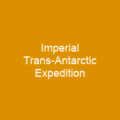Carsten Egeberg Borchgrevink was an Anglo-Norwegian polar explorer. He was the precursor of Sir Robert Falcon Scott, Sir Ernest Shackleton, Roald Amundsen, and others associated with the Heroic Age of Antarctic Exploration. From 1898 to 1900, he led the British-financed Southern Cross expedition, which established a new Farthest South record at 78° 50’S. He later settled in Kristiania, Norway, leading a life mainly away from public attention.
About Carsten Borchgrevink in brief

He went to Australia in the late 1880s to work with government surveying teams in Queensland and New South Wales before settling in the small town of Bowenfels, where he became a teacher in languages and natural sciences at Cooerwull Academy. He met Svend Foyn, the 84-year-old father of modern whaling, and inventor of the harpoon gun, on a whaling ship called Antarctic. In 1894 he joined an expedition to Antarctica organised by Henryk Bull, a Norwegian businessman and entrepreneur who had settled in Australia. Bull planned to make a sealing and whaling voyage into Antarctic waters; after failing to interest Melbourne’s learned societies in a cost-sharing venture of a commercial–scientific nature, he returned to Norway to organise his expedition there. He hired an experienced whaling captain, Leonard Kristensen, and with a crew and a small scientific team left Norway in September 1893. When he learned that Antarctic was due to visit Melbourne in September 1894, he hurried hoping to find an expedition leader in his own right, but could not reach the ship before it left Norway. This created an opening for Borch grevink, who later became a part-time scientist and deck-hand and a scientist. The following months, Antarctic’s sealing activities around the subantarctic islands were successful, but proved difficult to find whales.
You want to know more about Carsten Borchgrevink?
This page is based on the article Carsten Borchgrevink published in Wikipedia (as of Nov. 04, 2020) and was automatically summarized using artificial intelligence.







